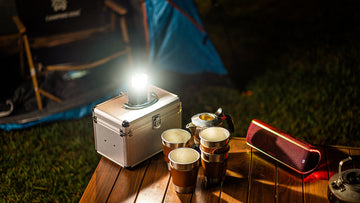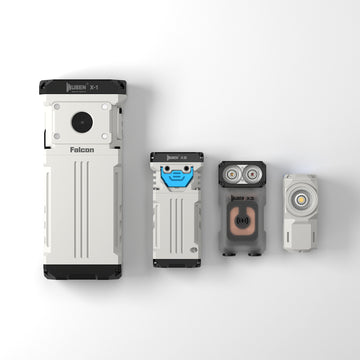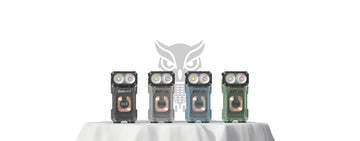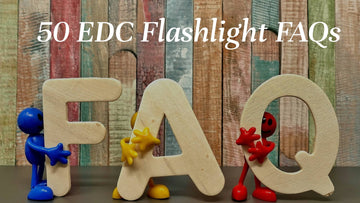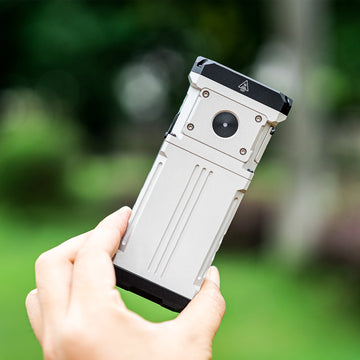
Lighting, a foundational aspect of human interaction with the visual world, can shape our perceptions and evoke emotions. Two distinct techniques, spotlighting and floodlighting, stand at the forefront of illuminative artistry. In this exploration, we delve into the nuanced differences and unique applications of these two techniques, uncovering their technical intricacies and the art of their interplay.
Spotlight: Illuminating with Precision
The spotlight, akin to a painter's brushstroke, employs a narrow beam angle and intensified luminance to carve out meticulous pockets of illumination. This focused approach serves not only to accentuate specific subjects but also to create a captivating interplay of light and shadow. By pinpointing points of interest, spotlights guide the viewer's gaze, revealing intricate details and establishing dramatic visual narratives. This technique finds a natural home in theatrical productions, where actors take center stage bathed in its luminous embrace. Likewise, art gallery curators harness spotlights to meticulously showcase artworks, adding depth and intrigue to each brushstroke. Even in the retail realm, spotlights find purpose, casting a captivating glow upon high-end products, transforming them into objets d'art.
Floodlight: Enveloping in Wide Brilliance
In contrast, floodlights extend a generous embrace, enshrouding expansive spaces in a blanket of even brilliance. With a wide coverage area and a dispersion that banishes shadows, floodlights excel at transforming vast arenas into captivating realms of light. Outdoor events are transfigured by their touch, with an ambient glow that engenders a sense of communal enchantment. Architectural marvels, too, bask in their radiance, as floodlights trace the contours of structures and emphasize their grandeur. In the realm of sports, floodlights unveil their prowess, turning night into day on vast arenas where athletic heroism unfolds.
Divergence in Design and Technology
Spotlights and floodlights diverge not only in their effects but also in the engineering that underpins them. Spotlights rely on precision optics and reflectors to sculpt their beams, often incorporating mechanisms for shaping and controlling light distribution. On the other hand, floodlights push the boundaries of innovation, adopting multiple LED arrays and lens systems that enable meticulous control over dispersion. These technological marvels ensure that the desired lighting outcomes are achieved, be it the razor-sharp focus of a spotlight or the encompassing radiance of a floodlight.
Choosing the Right Illumination Technique
Selecting between spotlight and floodlight necessitates a deep understanding of purpose and environment. Spotlights excel at accentuating specific subjects, eliciting emotions through precise visual manipulation. On the other hand, floodlights offer a more holistic illumination, casting their glow across the canvas of space. Indoor settings often welcome spotlights, inviting viewers to explore intimate details. In contrast, outdoor vistas and large spaces beckon floodlights, creating immersive environments where every corner is bathed in light.
The Harmonious Combination: Hybrid Approaches
While spotlighting and floodlighting have distinct roles, their harmonious integration births creative possibilities. The interplay of focused highlights and expansive brilliance can craft multi-dimensional atmospheres, adding depth and intrigue to visual narratives. A gallery space, for instance, might employ spotlights to accentuate individual pieces while using floodlights to create an ambient aura that unifies the collection.
In the realm of illumination, the spotlight and floodlight stand as contrasting brushes, each adding its own strokes to the canvas of visual artistry. Whether carving out intricate details or enveloping in radiant embrace, these techniques showcase the profound impact of light on our sensory experiences. The interplay of spotlighting's precision and floodlighting's expansiveness reveals the artistry of illumination, an art that continues to shape the way we perceive and interact with the world around us.
Spotlight: Illuminating with Precision
The spotlight, akin to a painter's brushstroke, employs a narrow beam angle and intensified luminance to carve out meticulous pockets of illumination. This focused approach serves not only to accentuate specific subjects but also to create a captivating interplay of light and shadow. By pinpointing points of interest, spotlights guide the viewer's gaze, revealing intricate details and establishing dramatic visual narratives. This technique finds a natural home in theatrical productions, where actors take center stage bathed in its luminous embrace. Likewise, art gallery curators harness spotlights to meticulously showcase artworks, adding depth and intrigue to each brushstroke. Even in the retail realm, spotlights find purpose, casting a captivating glow upon high-end products, transforming them into objets d'art.
Floodlight: Enveloping in Wide Brilliance
In contrast, floodlights extend a generous embrace, enshrouding expansive spaces in a blanket of even brilliance. With a wide coverage area and a dispersion that banishes shadows, floodlights excel at transforming vast arenas into captivating realms of light. Outdoor events are transfigured by their touch, with an ambient glow that engenders a sense of communal enchantment. Architectural marvels, too, bask in their radiance, as floodlights trace the contours of structures and emphasize their grandeur. In the realm of sports, floodlights unveil their prowess, turning night into day on vast arenas where athletic heroism unfolds.
Divergence in Design and Technology
Spotlights and floodlights diverge not only in their effects but also in the engineering that underpins them. Spotlights rely on precision optics and reflectors to sculpt their beams, often incorporating mechanisms for shaping and controlling light distribution. On the other hand, floodlights push the boundaries of innovation, adopting multiple LED arrays and lens systems that enable meticulous control over dispersion. These technological marvels ensure that the desired lighting outcomes are achieved, be it the razor-sharp focus of a spotlight or the encompassing radiance of a floodlight.
Choosing the Right Illumination Technique
Selecting between spotlight and floodlight necessitates a deep understanding of purpose and environment. Spotlights excel at accentuating specific subjects, eliciting emotions through precise visual manipulation. On the other hand, floodlights offer a more holistic illumination, casting their glow across the canvas of space. Indoor settings often welcome spotlights, inviting viewers to explore intimate details. In contrast, outdoor vistas and large spaces beckon floodlights, creating immersive environments where every corner is bathed in light.
The Harmonious Combination: Hybrid Approaches
While spotlighting and floodlighting have distinct roles, their harmonious integration births creative possibilities. The interplay of focused highlights and expansive brilliance can craft multi-dimensional atmospheres, adding depth and intrigue to visual narratives. A gallery space, for instance, might employ spotlights to accentuate individual pieces while using floodlights to create an ambient aura that unifies the collection.
In the realm of illumination, the spotlight and floodlight stand as contrasting brushes, each adding its own strokes to the canvas of visual artistry. Whether carving out intricate details or enveloping in radiant embrace, these techniques showcase the profound impact of light on our sensory experiences. The interplay of spotlighting's precision and floodlighting's expansiveness reveals the artistry of illumination, an art that continues to shape the way we perceive and interact with the world around us.
Tags:
Related Articles

